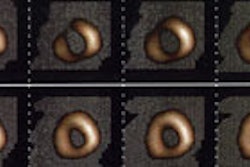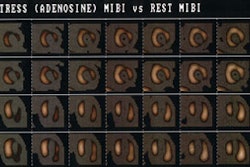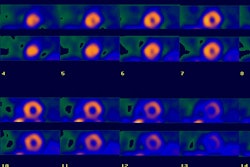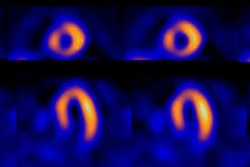Sato M, Maehara K, Yaoita H, Otani H, Hirosaka A, Saito T, Onuki N, Komatsu N, Ishihata T, Maruyama Y.
Cardiac (123)I-metaiodobenzylguanidine ((123)I-MIBG) uptake is reduced in chronic heart failure, and its reduction is reported to relate to the decrease in exercise capacity. Reduced (123)I-MIBG uptake may predict an inadequately reduced adrenergic drive to the heart during cardiac sympathetic stimulation, including exercise. However, there is little information about the relationship between cardiac (123)I-MIBG uptake at rest and norepinephrine (NE) release during exercise in relation to the exercise capacity in the failing heart. The aim of this study was to examine whether cardiac (123)I-MIBG uptake at rest can predict cardiac sympathetic activity during exercise in patients with chronic heart failure. We determined how cardiac (123)I-MIBG uptake at rest relates to NE overflow from the heart during symptom-limited graded exercise in such patients. METHODS: Twelve patients (mean +/- SD, 52 +/- 12 y) with chronic stable heart failure performed symptom-limited graded exercise tests under catheterizations with a 4-min stage using a supine bicycle ergometer within 2 wk after (123)I-MIBG imaging. NE concentrations in the arterial and coronary sinus blood (NE(A) and NE(CS), respectively) were measured at each exercise stage, and NE overflow was approximated by the difference between NE(CS) and NE(A) (NE(CS-A)). RESULTS: The left ventricular ejection fraction at rest was 47% +/- 16% and peak oxygen uptake was 17.7 +/- 5.1 mL/kg/min. The heart-to-mediastinum uptake ratio of the delayed (123)I-MIBG image (1.00 approximately 1.72; mean +/- SD, 1.30 +/- 0.19) correlated with NE(CS-A) at peak exercise (r = 0.80, P < 0.01) and peak heart rate (r = 0.73, P < 0.01) but not with peak oxygen uptake. CONCLUSION: Cardiac (123)I-MIBG uptake of the delayed image can predict the degree of the increase in adrenergic drive to the heart during sympathetic stimuli induced by exercise in patients with chronic heart failure.



